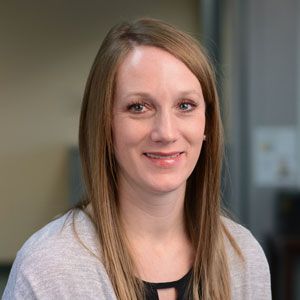In June of 2021, we published the report Student-Centered Learning in Michigan K-12 Schools: Factors That Impact Successful Implementation. This study aimed to capture the ways in which Michigan schools are implementing student-centered learning practices along with the factors that impact the successful implementation of such practices.
To inform the report, we interviewed teachers and both building- and district-level administrators from five Michigan school districts: Berrien Springs Public Schools, Hamilton Community Schools, Oxford Community Schools, Portland Public Schools, and the Public Schools of Calumet, Laurium, & Keweenaw. These school districts belong to a larger network of districts that are early adopters of student-centered learning called the Michigan CoOp (MiCoOp), which is led by Lisa Sitkins.
This mini-series Student-Centered Learning in Michigan K-12 Schools—which is part of our larger student-centered learning blog series—is meant to accompany the report and further explore the practical implications of the research.
In addition, the mini-series celebrates these schools as well as other K-12 schools throughout the state of Michigan who continue to work toward implementing student-centered learning models that include elements of digital learning, personalization, and competency-based learning progressions.
In our discussions with teachers and school leaders as part of this study, it was clear that the work required to make learning student-centered is not necessarily easily done. There are many challenges that teachers and school leaders may face which complicate the process.
Change is never easy.
However, as they say: “nothing ventured, nothing gained.” Without trying a different approach, we won’t see any changes—we can’t keep doing the same thing expecting a different result.
There are too many students for whom the traditional education system is not working. Too many students are falling through the cracks, being pushed onto the next unit or grade level before they are ready. Too many students have gaps in their learning that aren’t being filled in.
Making the shift to student-centered learning will come with challenges, there’s no doubt. But with these challenges come opportunities.
Opportunities to create different learning experiences and increase student engagement.
Opportunities to put students in the driver’s seat, allowing them to direct and design some aspects of their learning.
Opportunities to innovate—to change the mold of what we believed learning had to be—to create what learning could be.
In a blog written by the Christensen Institute, Thomas Arnett argues that the disruption to the traditional education system caused by COVID-19 has actually created the conditions that lead to change.
And teachers are the ones holding the key.

Opportunities to innovate—to change the mold of what we believed learning had to be—to create what learning could be.
Earning teacher buy-in
Teachers are tired.
They’ve been overworked and stretched too thin over the past year and a half while working through the COVID-19 pandemic. They’ve been told they had to move their materials online and teach remotely, then told they had to teach some students remotely while also teaching some students face-to-face.
Teachers have seen district initiatives come and go. Sometimes the initiative that’s so important one year seems to disappear the following year.
So it’s hard to blame them if they don’t jump in with both feet when a new district initiative is presented. Earning teacher buy-in can be a challenge when school leaders want to implement a student-centered learning model that requires a different style of teaching than the more traditional teacher-centered approach.
In a student-centered learning model, teachers help guide and support students on their own individual paths. They may consider multiple and different ways to assess learning as opposed to a traditional exam that all students take.
For many teachers, moving towards a student-centered learning model requires a shift in their mindset. It may be difficult for teachers to imagine how it is realistically possible to implement this sort of a model in their own classroom.
“It’s the pedagogy piece,” Portland’s Simone Margraf explains. “It’s understanding the difference between what they [teachers] have lived and breathed for so long and understanding the shift we want them to make and what it looks like.”
Making learning more student-centered rather than teacher-centered may challenge some teachers’ thinking.
Teachers might be hesitant to change what they are doing instructionally to take a more student-centered approach to learning because they feel that what they have been doing works. And it probably does for many students, but it’s not working for all students.
This is where a student-centered learning approach could help—as an opportunity to give each student what they need when they need it.
Gaining support from parents and the community
For some students, the traditional model of learning works well. Parents tend to understand this more traditional model, too, and because it worked for them, some don’t see a need for it to change.
Change can be difficult, especially when parents and/or the community don’t understand why a particular change is being made or if the change initially makes learning more challenging for their child.
Portland teacher Chandra Polasek admitted that some students may actually find learning in a student-centered classroom to be more challenging than in a regular class.
“We’ve put them in a box of ‘get the right answer’ by having them choose ‘which one of these four is correct.’ We’ve trained them in that manner so much so that the creative thinking and problem solving is completely gone,” said Polasek. “The independence in their thinking is gone and we have to find a way to reinsert that into the learning process so that learning is individualized, and owned, and intuitive, and curious, and fun again. I think we’ve lost the fun because we’ve told them that they need to be right when the learning is in the wrong.”
When students are challenged to think critically, to be more responsible for their own learning, some struggle at first because this student-centered style of learning is unfamiliar. Because this initial struggle may be a source of frustration for both students and parents, communicating changes and providing clear expectations should help to ensure parents understand any new processes and procedures.
Typically, parents want to be involved in their children’s education—and in a student-centered learning environment, getting parents involved will give them a better understanding as to how to provide their child with needed support.
When a school district makes the shift towards student-centered learning, it’s an opportunity to involve parents and the community—and having their support is critical.

“The independence in their thinking is gone and we have to find a way to reinsert that into the learning process so that learning is individualized, and owned, and intuitive, and curious, and fun again. I think we’ve lost the fun because we’ve told them that they need to be right when the learning is in the wrong.”
Maintaining teachers’ trust
Having credibility in the eyes of teachers and maintaining the trust of staff are instrumental for any administrator’s success.
Having credibility and trust are especially important when an administrator asks their staff to consider different pedagogical approaches such as student-centered learning.
Anita Qonja-Collins, Assistant Superintendent of Elementary Education at Oxford Community Schools, admitted that there can be a perception that administrators don’t know what’s happening in the classroom because they are not in the trenches, actually doing the work. “It’s really hard to have credibility in the work that you’re driving forward without getting some pushback of ‘you don’t understand,’” said Qonja-Collins.
She added that listening to teachers—ensuring that teachers know you are aware of and understand their challenges—is key to maintaining their trust and being able to implement new ideas and strategies with their support.
Including teachers in the conversation right from the beginning is another opportunity to earn and maintain teachers’ trust.
As Chris Davidson, Superintendent of the Public Schools of Calumet, Laurium, and Keweenaw, set in motion steps to establish and implement a student-centered mindset within his district, he established small teacher teams to begin designing competency-based models.
Davidson is using a student-centered approach with his teachers, putting them in the ‘driver’s seat’ in terms of this process, but guiding them and providing them with resources.
“The teachers will be driving this process. They will be building out these structures, building out these competencies, figuring out what it will look like in our buildings, and determining what spaces we are going to utilize.”
Including teachers in the conversation, asking for their feedback, involving teachers in the decision-making process, and giving them some leadership opportunities can result in increased trust in administration.
Logistics
When a school district or building wants to be truly student-centered, it requires changes beyond just the classroom. Logistical changes will need to be made in terms of scheduling, staffing, and how to measure students’ academic progress and achievement.
When we make these changes, they must be based on what each individual student needs and not necessarily what is and has been convenient for adults.
Technology can also pose challenges for districts in terms of coordinating their current LMS capabilities with tracking mastery of competencies. Different LMSs track mastery differently (some don’t work well in a standards-based system either), so it’s important to consider grading implications.
It can be challenging and will take time to get all buildings within a school district to be on the same page with regards to implementation and the degree to which they are willing to do so.
“I think the biggest barrier is when schools see something [like competency-based education or student-centered learning], but all the aspects and facets of it aren’t understood,” disclosed Oxford Virtual Academy’s Hybrid Learning Coordinator Jordan Dennis.
“Those need to be layered and built before you move in that direction and before you apply it.” You can’t just decide you want to implement competency-based education or student-centered learning and then start right away; it’s a structural overhaul. Dennis further emphasized, “Consider your curriculum, your goals, your philosophy—your organization has to understand what competency-based education is. It has to want it and want to move in that direction.”
The process of moving towards student-centered learning can be lengthy and involved. You’ll need to design your competencies, train your teachers, talk with your community members, and talk with students.
Dennis feels it is very important for students to know what they are working towards because in a competency-based environment, the students are the drivers: “You really have to phase them into competency-based education. Start by giving kids more opportunities for goal setting or flexible pacing and then layer on top of that.”
Designing learning that is student-centered can be an opportunity for students to learn how to drive their own learning, a skill that will benefit them long after they leave high school.

“Consider your curriculum, your goals, your philosophy—your organization has to understand what competency-based education is. It has to want it and want to move in that direction.”
Final thoughts
The COVID-19 pandemic has presented the field of education with many challenges. While we’ve heard some school leaders say that the pandemic has resulted in slowing their work towards making learning student-centered, others feel that the pandemic has only fueled it.
It’s easy to get in a groove and continue comfortable routines. However, sometimes it takes a disruption to seriously consider deviating from conventional practices. The pandemic could quite possibly be the unexpected disruption that has been needed in education.
In the more traditional model of education, too many students have slipped through the cracks, pushed on before they were ready. Too many students have had their progress hindered, prevented from moving forward to stay on pace with the rest of the class.
While the more traditional model of education does work for some students, it has not worked for all students.
When learning is student-centered, it happens at a pace and in a place that works best for each individual student. Decisions are made based on what is best for students—specifically, what is best for individual students.
“Our focus as educators for so long has been on the teaching part of education,” admitted Dave Eichberg. “In order for us to really embrace voice and choice, our focus has to shift. The lens through which we look at education has to be through the eyes of the learner.”
Shifting to a more student-centered learning model can and will present many challenges, but it’s also an opportunity to design learning differently.
Our next and final blog in this mini-series will discuss how school leaders can support teachers in making the shift toward student-centered learning.

“Our focus as educators for so long has been on the teaching part of education. In order for us to really embrace voice and choice, our focus has to shift. The lens through which we look at education has to be through the eyes of the learner.”
Student-centered learning blog series
In our Student-Centered Learning blog series, we lead a discussion about student-centered learning: what it is, how it can help students and schools, and how to make it a reality. Our hope with this series is to provide practical insights to school leaders, teachers, and parents on how to make education more meaningful to students. Stay up to date on future blogs in this series by signing up for email notifications!

